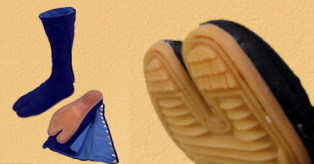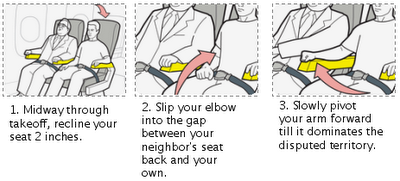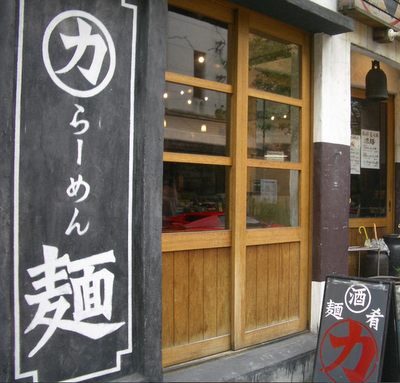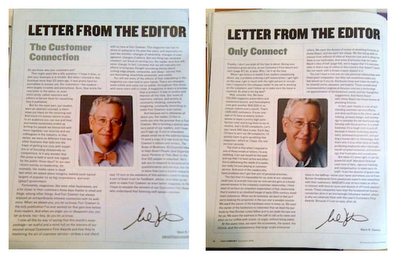I've been looking for this for some time and I'm glad I found it, thanks to Momus - the crazy, eye-patched, "alternative" Scottish musician who writes a column for Wired and loves everything Japanese (though I suspect he'd hate me for labelling like that... but I love his style) - and an excellent piece in Ping Magazine (a Tokyo-based design magazine). Take a look at these pants. They're called Tobi. They're worn by most Japanese construction workers. The first time I saw them was on NHK's "Cool Japan" TV show. They look like extra-baggy cargo pants, but their narrow legs remind me of ninja outfits.
You can find them at Toraichi, and at Kaseyama (and there's a model for children as well). The shoes are also very cool. They're called jika-tabi and they look like the traditional Japanese socks, originally designed to be worn with sandals. Jika-tabis however have a rubber sole and some of them are reinforced with metal to protect the toes. You can find them at amazon.com or at jinka-tabi.com.
The shoes are also very cool. They're called jika-tabi and they look like the traditional Japanese socks, originally designed to be worn with sandals. Jika-tabis however have a rubber sole and some of them are reinforced with metal to protect the toes. You can find them at amazon.com or at jinka-tabi.com.
Tuesday, October 31, 2006
Construction Workers' Fashion
Posted by
Nelson
at
9:20 PM
1 comments
![]()
Monday, October 30, 2006
mobile phones for the elderly
 (From left to right) Austria's EmporiaLife, the Firefly Kid (it's so easy grandparents can use as well), Samsung's Jitterbug, Germany's Vitaphone 1100.
(From left to right) Austria's EmporiaLife, the Firefly Kid (it's so easy grandparents can use as well), Samsung's Jitterbug, Germany's Vitaphone 1100.They all have some basic features: large buttons, easy-to-read text, better (i.e., louder) sound and ringing tone, and with the exception of the Firefly, they all have an emergency button for easy access to a medical center.
This one below was launched by a Brazilian company. It's called Blob. It's designed for either children or seniors. Blob's striking feature is that it has no screen at all. It comes with just three direct-dialing buttons, and one emergency call button, which includes a GPS-locator service.
 But I think the greatest innovation comes from Japan's NTT DoCoMo. They have developed a bone conduction receiver-microphone called Sound Leaf. It plugs into the mobile's earphone port and it works by transmitting the sound's vibrations via the user's skull, instead of the eardrum (see picture below). This is a much smarter solution than the louder (i.e., better) sound from the other phones as it keeps the conversation private without annoying other people. It also avoids the ludicrous situation of having everybody talking louder and louder on their phones.
But I think the greatest innovation comes from Japan's NTT DoCoMo. They have developed a bone conduction receiver-microphone called Sound Leaf. It plugs into the mobile's earphone port and it works by transmitting the sound's vibrations via the user's skull, instead of the eardrum (see picture below). This is a much smarter solution than the louder (i.e., better) sound from the other phones as it keeps the conversation private without annoying other people. It also avoids the ludicrous situation of having everybody talking louder and louder on their phones.
Posted by
Nelson
at
12:03 PM
0
comments
![]()
Saturday, October 28, 2006
eve ensler on ted talks
I've been searching for this for some time now and finally found it. Eve Ensler, author of "Vagina Monologues" on TED. Watch it. It's just 21:11. It's worth it.
Posted by
Nelson
at
10:26 PM
0
comments
![]()
made in hawaii
 This is one of my most prized possessions. I bought last summer during a trip to Hawaii. It's the perfect souvenir, but I can attest that it is also a very efficient artefact to kill flies, mosquitoes and any undesirable flying "object". The design is pretty ingenuous, just a flip-flop (or slipper, or sandal, depending on where you live), attached to a flexible wand. You can find one here.
This is one of my most prized possessions. I bought last summer during a trip to Hawaii. It's the perfect souvenir, but I can attest that it is also a very efficient artefact to kill flies, mosquitoes and any undesirable flying "object". The design is pretty ingenuous, just a flip-flop (or slipper, or sandal, depending on where you live), attached to a flexible wand. You can find one here.
Posted by
Nelson
at
3:55 PM
0
comments
![]()
Friday, October 27, 2006
norwegian formula?
 "Norwegian Formula"... I noticed this on a small Neutrogena hand cream bottle that was sitting in my bathroom (with the Norwegian flag and all). Actually, I found out, it is the name of the whole brand extension. Neutrogena is an American company (it belongs to J&J). Why would they want to name a hand cream with such a name? Certainly there's something about Norway that makes people perceive this is a good hand cream. I guess it says a lot about a country's brand image. Country of origin has historically been one of the first forms of branding products (think rum from Jamaica, or spices from the East). It was an early form of avoiding counterfeits (yes, they existed since those days). These are strong associations, built over years and years, sometimes centuries of massive cultural "advertising" (colonization, novels, theatre plays, and more recently, movies). When we think about wine, for example, we think about France. When we think about sports cars we think about Germany (maybe Italy). When we think about electronics, we think about Japan (and increasingly South Korea). And when we think about moisturizing creams, we think about err... Norway?
"Norwegian Formula"... I noticed this on a small Neutrogena hand cream bottle that was sitting in my bathroom (with the Norwegian flag and all). Actually, I found out, it is the name of the whole brand extension. Neutrogena is an American company (it belongs to J&J). Why would they want to name a hand cream with such a name? Certainly there's something about Norway that makes people perceive this is a good hand cream. I guess it says a lot about a country's brand image. Country of origin has historically been one of the first forms of branding products (think rum from Jamaica, or spices from the East). It was an early form of avoiding counterfeits (yes, they existed since those days). These are strong associations, built over years and years, sometimes centuries of massive cultural "advertising" (colonization, novels, theatre plays, and more recently, movies). When we think about wine, for example, we think about France. When we think about sports cars we think about Germany (maybe Italy). When we think about electronics, we think about Japan (and increasingly South Korea). And when we think about moisturizing creams, we think about err... Norway?
Posted by
Nelson
at
9:16 PM
0
comments
![]()
what would you do if you were battling Apple?
Apple behaves as a challenger brand (to borrow Adam Morgan's concept), but in terms of brand perception it is actually much bigger and it has much more clout than the typical challenger brand. Its entry into the music market helped to generate a momentum that has spread to its computer division. They've just entered the movie distribution market, and there are rumors that they are about to enter the mobile phone category (if they ever figure out a way to control the whole distribution channels, i.e. telcos, which seems to be the biggest obstacle now). While they still have a small (but growing) market share in computers, the perception is that they're on a roll and can do no wrong at the moment. And what about the competitors?
Microsoft, while still big, seems to have lost its focus and is now all over the place: they're losing their grip on the browser arena (they've just launched IE7 after years of delay but Firefox is rapidly gaining ground); they have a search engine to battle Google; they'll launch Zune mp3 player to battle the iPod; but more importantly, they still have to figure out their strategy in this open software economy. The only thing hot at Microsoft now is the Xbox. But what's Microsoft's positioning in consumer's minds?
Dell, the largest computer maker in the world is facing problems with their low-cost strategy having recently stated declining profits. In perhaps a surprising twist in their strategy, they have started talking about, of all things, design, as if trying to steal a page out of Apple's book.
Creative Technologies, the maker of Zen mp3 players, brazenly declared "war on the iPods". That was about two years ago. After several quarters in the red, the company sued Apple for a copyright infringement (settled for US$ 100 million). They're now one of the official "Made for iPod" accessory makers.
RealNetworks also launched its own music downloading service (not available for Macs, apparently).
Sony is going through a reorganization process, trying to end its siloed culture (not to mention the flaming batteries problem).
The biggest threat to Apple seems to come from Google nowadays. With the recent purchase of YouTube, Google has a firm grasp of the growing video distribution business, which clashes with the iTunes+iPod video player. There's one detail though: Eric Schmidt, Google's CEO just joined Apple's board, proving once more that Steve Jobs is a very shrewd man.
So, what would you do if you were battling Apple? That's the billion-dollar question.
References:
Burton, John. 2006. Creative surges on $ 100 million Apple payment. Financial Times. August 24, 2006.
de la Merced, Michael. 2006. Recall wipes out Sony's profits for latest quarter. The New York Times. October 26, 2006.
Evangelista, Linda. 2005. Creative expands the war against Apple and iPods. San Francisco Chronicle. August 1, 2005.
Flynn, Laurie J. 2006. Apple profit rises 27%. Stock jumps. The New York Times. October 19, 2006.
Gunther, Marc. 2006. The Welshman, The Walkman, The Salaryman. Fortune. June 12, 2006.
Kirkpatrick, David. 2006. Microsoft's New Brain. Fortune. May 15, 2006.
Kirkpatrick, David. 2006. Dell In The Penalty Box. Fortune. September 18, 2006.
Posted by
Nelson
at
2:00 PM
0
comments
![]()
Thursday, October 26, 2006
dove and self-esteem
Posted by
Nelson
at
1:48 PM
0
comments
![]()
Wednesday, October 25, 2006
singapore airlines' new seats
 Singapore Airlines has unveiled its new seats arrangements for long-haul flights between Singapore and some European cities (initially for flights to Paris and Switzerland and progressively to other destinations).
Singapore Airlines has unveiled its new seats arrangements for long-haul flights between Singapore and some European cities (initially for flights to Paris and Switzerland and progressively to other destinations).This is the business class seat. It's huge, at least 30 inches wide (the first-class seat is even wider at 35 inches)! And every seat comes with its own 15.4-inch widescreen LCD. Unfortunately, the company says that this upgrade will probably come at a cost, about 10 to 20% more. For the rest of us who have to travel coach most of the times, at least we can resort to Wired's tips on "how to capture the armrest".

Posted by
Nelson
at
6:37 PM
3
comments
![]()
Tuesday, October 24, 2006
madman - where do ideas come from?
 I have a thing about shoes, sports shoes that is. Not as Carrie and her Manolos, mine is more of a cultural interest, if you will (or at least that's how I keep fooling myself). I bought this book a while ago, and I found in it this wonderful example of "where do ideas come from". This is Nike's Air Barkley Max. Well, Charles Barkley, besides being one of NBA's greatest characters, was also known as a very rough player, and some called him the Madman. So Nike designers came up with this shoe, full of straps. They went for what they called "a psychiatric ward look, a reinforced, metal-bracked lace locking-system". The inspiration? A straitjacket. Brilliant!
I have a thing about shoes, sports shoes that is. Not as Carrie and her Manolos, mine is more of a cultural interest, if you will (or at least that's how I keep fooling myself). I bought this book a while ago, and I found in it this wonderful example of "where do ideas come from". This is Nike's Air Barkley Max. Well, Charles Barkley, besides being one of NBA's greatest characters, was also known as a very rough player, and some called him the Madman. So Nike designers came up with this shoe, full of straps. They went for what they called "a psychiatric ward look, a reinforced, metal-bracked lace locking-system". The inspiration? A straitjacket. Brilliant!
Posted by
Nelson
at
9:07 PM
0
comments
![]()
sign of apocalypse
Bully, a new video-game released by Rockstar Games.
Posted by
Nelson
at
7:44 PM
0
comments
![]()
Monday, October 23, 2006
vuja de
Well, I googled "vuja de" to find out who had originally coined it. The answer? George Carlin (hah, who else?). The guy is genius.
Posted by
Nelson
at
10:48 PM
0
comments
![]()
Sunday, October 22, 2006
modern man
Posted by
Nelson
at
6:05 PM
0
comments
![]()
Friday, October 20, 2006
beautiful awkward pictures
Posted by
Nelson
at
7:20 PM
0
comments
![]()
Thursday, October 19, 2006
fuwa - where do ideas come from?
 Beijing Olympics' mascots have been officially renamed "Fuwa". Get used to that name. With some 650 days for the Games' opening, we're all going to hear a lot about them in the coming months. Like many things in China, there are many symbolic meanings associated with this name. There are five Fuwa, a reference to the five Olympic rings, and they were (I quote from the Games' Official Website) "designed to express the playful qualities of five little children who form an intimate circle of friends... they also embody the natural characteristics of four of China's most popular animals - the Fish, the Panda, the Tibetan Antelope, the Swallow - and the Olympic Flame. Each of Fuwa has a rhyming two-syllable name - a traditional way of expressing affection for children in China. Beibei is the Fish, Jingjing is the Panda, Huanhuan is the Olympic Flame, Yingying is the Tibetan Antelope and Nini is the Swallow. When you put their names together - Bei Jing Huan Ying Ni - they say 'Welcome to Beijing' ...In their origins and their headpieces, you can see the five elements of nature - the sea, forest, fire, earth and sky...".
Beijing Olympics' mascots have been officially renamed "Fuwa". Get used to that name. With some 650 days for the Games' opening, we're all going to hear a lot about them in the coming months. Like many things in China, there are many symbolic meanings associated with this name. There are five Fuwa, a reference to the five Olympic rings, and they were (I quote from the Games' Official Website) "designed to express the playful qualities of five little children who form an intimate circle of friends... they also embody the natural characteristics of four of China's most popular animals - the Fish, the Panda, the Tibetan Antelope, the Swallow - and the Olympic Flame. Each of Fuwa has a rhyming two-syllable name - a traditional way of expressing affection for children in China. Beibei is the Fish, Jingjing is the Panda, Huanhuan is the Olympic Flame, Yingying is the Tibetan Antelope and Nini is the Swallow. When you put their names together - Bei Jing Huan Ying Ni - they say 'Welcome to Beijing' ...In their origins and their headpieces, you can see the five elements of nature - the sea, forest, fire, earth and sky...".
Posted by
Nelson
at
11:23 PM
2
comments
![]()
noticing
 Grant McCracken's post about "noticing" is a great one. For those (few) who don't know him, Grant is an anthropologist, author, blogger, marketing consultant, and one of the first people I read who wrote about culture and marketing in the same sentence. I was heavily influenced by his "Culture and Consumption" book, and his "Meaning Transfer Model" is a seminal reading for anyone working with "meaning management" (most of us).
Grant McCracken's post about "noticing" is a great one. For those (few) who don't know him, Grant is an anthropologist, author, blogger, marketing consultant, and one of the first people I read who wrote about culture and marketing in the same sentence. I was heavily influenced by his "Culture and Consumption" book, and his "Meaning Transfer Model" is a seminal reading for anyone working with "meaning management" (most of us).
Posted by
Nelson
at
2:18 PM
0
comments
![]()
Tuesday, October 17, 2006
where do ideas come from?
I came across this neat web application to share presentations (via Infectious Greed). It works pretty much like YouTube, you can upload your presentation and share it with everybody who access the site, or you can embed it on your own web site, which I'm doing here. I took an old presentation I did about E.T., the movie. See below. I think it's another good example of "where do ideas come from". This has the potential to become an interesting series. PS: the only thing is it changed the italics in the title to that weird font.
Posted by
Nelson
at
12:18 PM
2
comments
![]()
Monday, October 16, 2006
balseros
 Writing this post, it reminded me of this other documentary called "Balseros" (Rafters) that I watched quite some time ago on HBO. Like "Chinese Restaurants", it's also a story about migration, this one of seven Cubans trying to escape the Castro regime in improvised homemade "balsas" (rafts), hence the title. The documentary follows the seven refugees as they prepare their rafts a few days before facing their journey, an uncertain attempt at crossing the shark-infested Florida Strait on their way to reaching the Florida coast. We witness all the drama, the painful farewell from their loved ones, the promises of reunion some time in the future. Then the documentary actually takes us 7 years in the future, and we catch the seven refugees living in the US. It's riveting to be able to witness what happened to their lives (spoiler warning!). There are the ones who never saw their relatives again and there are the ones who were able to reunite with their loved ones. Some proudly show their new American citizenship as well as their newly acquired possessions. Some others bitterly complain about their crushed dreams. It's all very intimate and as you get to know them, it’s hard not to share their joys and disappointments. This sure beats Reality TV. This is real drama. As the producers write, "theirs is a true story about some of the authentic survivors of our times, the human adventure of people who are shipwrecked between two worlds."
Writing this post, it reminded me of this other documentary called "Balseros" (Rafters) that I watched quite some time ago on HBO. Like "Chinese Restaurants", it's also a story about migration, this one of seven Cubans trying to escape the Castro regime in improvised homemade "balsas" (rafts), hence the title. The documentary follows the seven refugees as they prepare their rafts a few days before facing their journey, an uncertain attempt at crossing the shark-infested Florida Strait on their way to reaching the Florida coast. We witness all the drama, the painful farewell from their loved ones, the promises of reunion some time in the future. Then the documentary actually takes us 7 years in the future, and we catch the seven refugees living in the US. It's riveting to be able to witness what happened to their lives (spoiler warning!). There are the ones who never saw their relatives again and there are the ones who were able to reunite with their loved ones. Some proudly show their new American citizenship as well as their newly acquired possessions. Some others bitterly complain about their crushed dreams. It's all very intimate and as you get to know them, it’s hard not to share their joys and disappointments. This sure beats Reality TV. This is real drama. As the producers write, "theirs is a true story about some of the authentic survivors of our times, the human adventure of people who are shipwrecked between two worlds."These two documentaries, “Chinese Restaurants” and “Balseros”, brings to life the human drama that takes places when somebody moves to another country, mostly when it's the only solution to escape poverty, but to a lesser extent I think it could apply to any migrant. According to the most recent UN report there are 190 million international migrants in the world. Migration has been one of the hot topics for governments all over the world and will continue to be in the coming decades. Even in the US, a country largely built and formed by immigrants, this is a contentious issue to this day. As the population of some of the world's most developed countries decline, governments are being forced to act upon. Some measures are more successful than others (limiting access to birth control, cash bonuses to couples bearing more than one child) but they all seem just palliative measures against a stronger tide. Ultimately, governments will have to allow some form of immigration. Countries such as Russia, Japan, and Singapore, are already debating these issues. But this is far from simple arithmetic. It raises a lot of questions regarding culture, race, and the population gene. Japan, for example, has one of the most racially uniform populations in the world. How will they deal with an influx of different gene pool? How will any country, for that matter, manage the increasing usage of "foreign" languages (such as Spanish in the US) and the changes in racial mix? China has another type of problem: a surplus of 23 million men in marriage age over the next 10 years. Where will they find the brides? There are no simple answers. One thing is for certain. There'll be lots of people migrating. Some eventually will find a more comfortable life. But there'll be also lots of people caught in the middle, struggling to come to terms with their own identities and missing their loved ones. Because when you migrate to another country, you might win some, but you always lose something. That's the deal one makes.
References:
Murphy, Kim. 2006. The Vanishing Russians: Part I - A Dying Population. Los Angeles Times. October 8, 2006
Onishi, Norimitsu. 2006. Village writes its epitaph: victim of greying Japan. The New York Times. April 30, 2006.
Poston Jr, Dudley L. and Peter A. Morrison. 2005. China: Bachelor Bomb. The International Herald Tribune. September 14, 2005.
Pressley, Sue Anne, Karin Brulliard and Ernesto Londono. 2006. Marchers flood mall with passion and pride. The Washington Post. April 11, 2006.
Ramesh, S. 2006. Singapore government outlines plans to tackle population problem. Channel NewsAsia. 23 August 2006
UNFPA. 2006. The State of World Population 2006.
Posted by
Nelson
at
1:45 PM
0
comments
![]()
Friday, October 13, 2006
little india






Posted by
Nelson
at
11:59 AM
0
comments
![]()
eve ensler
 I first heard about TED from Russell Davies (who else?). To call TED a conference is a gross misrepresentation. TED brings remarkably brilliant people from all fields, thought-leaders such as Jeff Bezos, Al Gore, Bill Gates, Malcom Gladwell, Steven Levitt, Jeffrey Katzemberg, Yo-Yo Ma, Sergey Bryn, Larry Page, and Ze Frank (the "how to dance properly" guy), with the only caveat that they can only talk for 20 minutes. TED has now started to make the presentations available for viewing and downloading. Go there, fast. In the meantime, I'll post links to the ones that struck me the most:
I first heard about TED from Russell Davies (who else?). To call TED a conference is a gross misrepresentation. TED brings remarkably brilliant people from all fields, thought-leaders such as Jeff Bezos, Al Gore, Bill Gates, Malcom Gladwell, Steven Levitt, Jeffrey Katzemberg, Yo-Yo Ma, Sergey Bryn, Larry Page, and Ze Frank (the "how to dance properly" guy), with the only caveat that they can only talk for 20 minutes. TED has now started to make the presentations available for viewing and downloading. Go there, fast. In the meantime, I'll post links to the ones that struck me the most:Sir Ken Robinson, author and creativity guru on creativity and education.
Hans Rosling, founder of Gapminder, on how to make data more compelling.
Posted by
Nelson
at
11:02 AM
4
comments
![]()
Thursday, October 12, 2006
chinese restaurants
Posted by
Nelson
at
1:50 PM
0
comments
![]()
Tuesday, October 10, 2006
underdogs
Underdogs: The collision of intelligence and ambition with opportunity is unbeatable. Almost everyone we have ever invested in has been a complete unknown at the time we met. Many have been immigrants or first generation Americans with barely a penny to their name. Underdogs are our favorite kind of people.
Posted by
Nelson
at
4:38 PM
0
comments
![]()
ramen
 I love "ramen", not the pre-packed, microwavable one, but the real thing, made with a rich pork bone broth, with tender pieces of pork meat, an egg, and succulent noodles. I'm not alone. People can get pretty obsessed about ramen. I never heard of a Pizza Museum, and yet there is a Ramen Museum in the city of Yokohama, one testament of the ramen-craze, complete with ramen shops, ramen video-games (?), a replica of an old street in Tokyo with old ramen carts and all ramen paraphernalia you can imagine. And for those movie buffs who can't be satisfied only with Tampopo, there's another "ramen movie" being made, Ramen Girl, starring Brittany Murphy, which is schedule to open in 2007. There are also many "ramen bloggers", such as this and this. Well, here's my small contribution: last time I went to Tokyo, I found Manrikiya (photo above), a small ramen shop in Azabu-juban. They had a funny collection of Japanese figure toys in one corner, and the ramen was simply delicious.
I love "ramen", not the pre-packed, microwavable one, but the real thing, made with a rich pork bone broth, with tender pieces of pork meat, an egg, and succulent noodles. I'm not alone. People can get pretty obsessed about ramen. I never heard of a Pizza Museum, and yet there is a Ramen Museum in the city of Yokohama, one testament of the ramen-craze, complete with ramen shops, ramen video-games (?), a replica of an old street in Tokyo with old ramen carts and all ramen paraphernalia you can imagine. And for those movie buffs who can't be satisfied only with Tampopo, there's another "ramen movie" being made, Ramen Girl, starring Brittany Murphy, which is schedule to open in 2007. There are also many "ramen bloggers", such as this and this. Well, here's my small contribution: last time I went to Tokyo, I found Manrikiya (photo above), a small ramen shop in Azabu-juban. They had a funny collection of Japanese figure toys in one corner, and the ramen was simply delicious.Here's the address:
Manrikiya
Tokyo-to Minato-ku
Azabu-juban 2-3-2
http://www.adhams.co.jp/manrikiya/
Posted by
Nelson
at
1:33 PM
2
comments
![]()
google + YouTube
- the incredible quick success of YouTube, a typical garage start-up that in a time span of just 20 months became a social phenomena with 50 million users worldwide.
- the huge payoff for Sequoia Capital, the Silicon Valley venture capital firm that put down US$ 11 million and got a 30% stake in the company, worth now US$ 495 million. Not a bad return for a 20-month investment.
- the fact that it was Google who got the final deal beating the other suitors, Microsoft, Viacom, Fox and Yahoo. It tells something about the dramatic shift in power in the business world.
- the jury is still out though, with all the copyright implications, as Mark Cuban writes in his Maverick blog.
- YouTube. Great choice of name, it says what the service is all about right away. And a refreshing one for that matter, given all the undistinctive "i-something" brands that exist out there. Maybe it was just a coincidence but it's interesting that "YouTube" is exactly the opposite of the "i-something" bunch (You, i, so duh, how didn't I notice it before?), and it's YouTube with a capital initial, not youtube.
- But will that mean we'll be flooded with a bunch of "You-something" brands now?
Reference:
Sorkin, Andrew Ross and Jeremy W. Peters. 2006. Google to acquire Youtube for $1.65 billion. The New York Times. October 9, 2006.
Posted by
Nelson
at
10:52 AM
0
comments
![]()
Saturday, October 07, 2006
hazy days
 This is a picture taken from Sentosa Island, overlooking Singapore's main island. Not much to say really, just that the air quality has been terrible the last couple of days, as the smoke from the forest fires in Sumatra, couple of hundred miles to the South, reach Singapore. And it smells (a distinct burning smell). Not nice. Longing to see some blue sky soon.
This is a picture taken from Sentosa Island, overlooking Singapore's main island. Not much to say really, just that the air quality has been terrible the last couple of days, as the smoke from the forest fires in Sumatra, couple of hundred miles to the South, reach Singapore. And it smells (a distinct burning smell). Not nice. Longing to see some blue sky soon.
Posted by
Nelson
at
10:48 PM
0
comments
![]()
Thursday, October 05, 2006
"fast company" jumped the shark
Created in the ’90s to be a voice for the new generation of “free agent” workers, the magazine helped to show a new way of life amid the changing nature of work. Articles such as Alan Webber's "Are You Deciding on Purpose?" (FC 13, Feb/March 1998) showed an alternative, more intelligent, more creative, more intense and personal and yet more balanced and casual way of working and living. People bought in. By issue no. 35, from Aug. 2000, the magazine had swollen to a yellow-pages-like 418 pages! As a magazine junkie myself, I've bought every single issue since January 1998. I devoured the articles about the importance of design, the new working structures, and how creative teams were solving problems in different industries.
But then, the internet bubble burst, and Fast Company, like in a bad case of anorexia, started to get thin. And thin. And by issue no. 92, from March 2005, it had shrunk to 96 pages, less than a quarter of the size from their heydays! But I hadn't given up on the magazine just yet.
Then in late 2005, Fast Company was sold to another publishing company and a new editor, Mark N. Vamos, took over. And then, came the shock.
 In his very first "Letter from the editor" (left photo, from the October 2005 issue), Mark N. Vamos, appeared using a bow tie. A bow tie! This was supposed to be the magazine that practically endorsed and validated the "everyday casual day" dress code. And now the editor wears a bow tie? What was he thinking? More recently he’s been sporting a more casual open-collar shirt (right photo, from the September 2006 issue). Somebody must have warned him.
In his very first "Letter from the editor" (left photo, from the October 2005 issue), Mark N. Vamos, appeared using a bow tie. A bow tie! This was supposed to be the magazine that practically endorsed and validated the "everyday casual day" dress code. And now the editor wears a bow tie? What was he thinking? More recently he’s been sporting a more casual open-collar shirt (right photo, from the September 2006 issue). Somebody must have warned him.I'm still buying the magazine though. A recent issue brought an interesting article about the emergence of “Aerotropolis”, giant airport-cities, designed to be well-oiled machines to facilitate the flow of people, goods and businesses. That’s fine. I’ll keep buying the magazine as long as it keeps bringing articles such as this (but I'll keep having second thoughts about that bow tie).
It's just a small detail (but then again, maybe it's not).
Reference:
Webber, Alan W. 1998. Are you deciding on purpose? Fast Company. December/January 1998
Lindsay, Greg. 2006. The rise of aerotropolis. Fast Company. July/August 2006
Posted by
Nelson
at
10:41 PM
2
comments
![]()
Wednesday, October 04, 2006
missed turn
 Something (mildly) funny happened today. I stumbled on this post about Richard Pryor (on Beeker Idea's blog). Then went out for lunch. Caught myself thinking about the post, its argument, its tone, its prose. Lost in my thoughts, missed a turn (it happens to me all the time). Made a U-turn 100m down the road (laughing at myself). Well, that was the (mildly) funny part. The post? It is a wonderful essay on what makes Richard Pryor funny. I wish I could write like that.
Something (mildly) funny happened today. I stumbled on this post about Richard Pryor (on Beeker Idea's blog). Then went out for lunch. Caught myself thinking about the post, its argument, its tone, its prose. Lost in my thoughts, missed a turn (it happens to me all the time). Made a U-turn 100m down the road (laughing at myself). Well, that was the (mildly) funny part. The post? It is a wonderful essay on what makes Richard Pryor funny. I wish I could write like that.
Posted by
Nelson
at
5:14 PM
0
comments
![]()
Monday, October 02, 2006
where do ideas come from?
I've watched Formula One races for ages, and have watched most ER episodes as well, and yet I could never have thought about this (via LunchoverIP). A team of doctors from a London hospital got in contact with Ferrari to learn more about their pit-stop preparation and team synchronization. And when you come to see it, it seems a pretty obvious comparison. Basically, you have a team of people waiting for somebody (or something) to arrive, both with the pressure of time to solve a problem. It could apply to a team of mechanics in a F-1 box or to a team of doctors in an operating room, and they could perfectly learn from each other. Brilliant!

Posted by
Nelson
at
6:41 PM
3
comments
![]()

